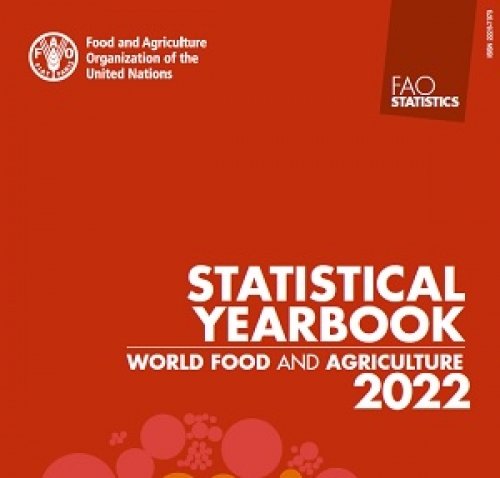Global pesticide use peaked in 2012 and began declining in 2017, reveals FAO’s Annual Statistical Yearbook
The production of primary crops in the world, such as sugarcane, maize, wheat and rice, grew by 52 per cent from 2000 to 2020 to reach 9.3 billion tonne, according to the Food and Agriculture Organisation (FAO) annual Statistical Yearbook. The Food and Agriculture Organisation of the United Nations (FAO) published its annual Statistical Yearbook.
FAO Yearbook stated vegetable oil production increased by 125 per cent over the period, with palm oil output growing by 236 per cent. Meat output, led by chicken, grew by 45 per cent, while the growth rate for fruits and vegetables was 20 per cent or below.
Sugarcane is the world’s largest crop by volume, with 1. 9 billion tonnes annually. Maize is next at 1.2 billion tonnes. Global food exports have risen to $1.42 trillion, up by a factor of 3.7 since 2000.
Worldwide, the largest food-exporting countries in gross terms are the United States of America, the Netherlands and China. The largest exporters in net terms were Brazil, by far, followed by Argentina and Spain. The largest net importing countries were China, Japan and the United Kingdom.
Some 4.74 billion hectare of the planet’s surface is agricultural land, including meadows and pastures as well as crops. That figure is down 3 per cent from 2000, but down six times as much in per capita terms, with Africa again in the lead.
Worldwide pesticide use peaked in 2012 and began declining in 2017. The countries with the highest pesticide application per hectare are Saint Lucia, Maldives and Oman.
According to the report, Dietary energy supply, a key indicator for food security, went up in all regions since 2000 and did so the most in Asia. The world average is now 2 960 calories per person per day, up 9 per cent, with the level peaking at 3 540 calories per day per person in Europe and North America.
Today, some 866 million people work in agriculture, more than a quarter of the global workforce, and produced $3.6 trillion in value-added. Compared to 2000, those figures represent a 78 per cent increase in economic value, produced by 16 per cent fewer people, with Africa posting double that pace of growth.
The report says the Average temperature in 2021 was 1.44 °C hotter than the average from 1951 to 1980. Europe has had the highest temperature change, followed by Asia, with Oceania reporting by far the least change.
Greenhouse gas emissions on agricultural land declined by 4 per cent between 2000 and 2020, with 70 per cent of them generated within the farm gate.
Cattle and sheep meat account for most carbon dioxide emissions, with cattle averaging 50 times more than chicken. The emissions intensity of cereals is much lower, although rice emits more than five times more than wheat and coarse grains.
The rate of greenhouse gas emissions changes significantly across regions, reflecting large differences in efficiencies of production. For instance, the emissions intensity of cattle meat in Africa is almost four times as great as in Europe.

